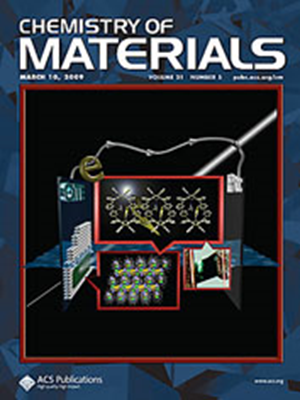Enlarged Cleavable Linkages in Shuriken-like Quaternary Ammonium Compounds Providing Safer Bactericides
IF 7.2
2区 材料科学
Q2 CHEMISTRY, PHYSICAL
引用次数: 0
Abstract
Although they offer great convenience in preventing microbial infections, the nondegradable feature of most commercial quaternary ammonium compounds (QACs) has led to persistent environmental accumulation, raising significant concerns about their detrimental impacts on public and ecological health. In this study, we report a kind of shuriken-like QACs with rapid hydrolysis properties under mild conditions, enabled by the introduction of enlarged cleavable linkages as backbones. Such shuriken-like QACs present potent bactericidal activity owing to the multicationic “heads” yet can be converted to entirely harmless forms of choline and silicone oil after degradation. Both the cytotoxicity assessment and the biosafety evaluation confirm the nontoxic nature of the degradation products. The bactericidal performance in fruit preservation and infection prevention on fabric surfaces further illustrates the broad application prospects of such degradable QACs within the realm of food safety and public health. With the advantages of rapid hydrolysis, environmental friendliness, and low biotoxicity, the concept of an “enlarged cleavable linkage” strategy will pave the way for exploiting a generation of degradable disinfectants that can effectively combat microbial threats while ensuring a minimal ecological footprint.

求助全文
约1分钟内获得全文
求助全文
来源期刊

Chemistry of Materials
工程技术-材料科学:综合
CiteScore
14.10
自引率
5.80%
发文量
929
审稿时长
1.5 months
期刊介绍:
The journal Chemistry of Materials focuses on publishing original research at the intersection of materials science and chemistry. The studies published in the journal involve chemistry as a prominent component and explore topics such as the design, synthesis, characterization, processing, understanding, and application of functional or potentially functional materials. The journal covers various areas of interest, including inorganic and organic solid-state chemistry, nanomaterials, biomaterials, thin films and polymers, and composite/hybrid materials. The journal particularly seeks papers that highlight the creation or development of innovative materials with novel optical, electrical, magnetic, catalytic, or mechanical properties. It is essential that manuscripts on these topics have a primary focus on the chemistry of materials and represent a significant advancement compared to prior research. Before external reviews are sought, submitted manuscripts undergo a review process by a minimum of two editors to ensure their appropriateness for the journal and the presence of sufficient evidence of a significant advance that will be of broad interest to the materials chemistry community.
 求助内容:
求助内容: 应助结果提醒方式:
应助结果提醒方式:


